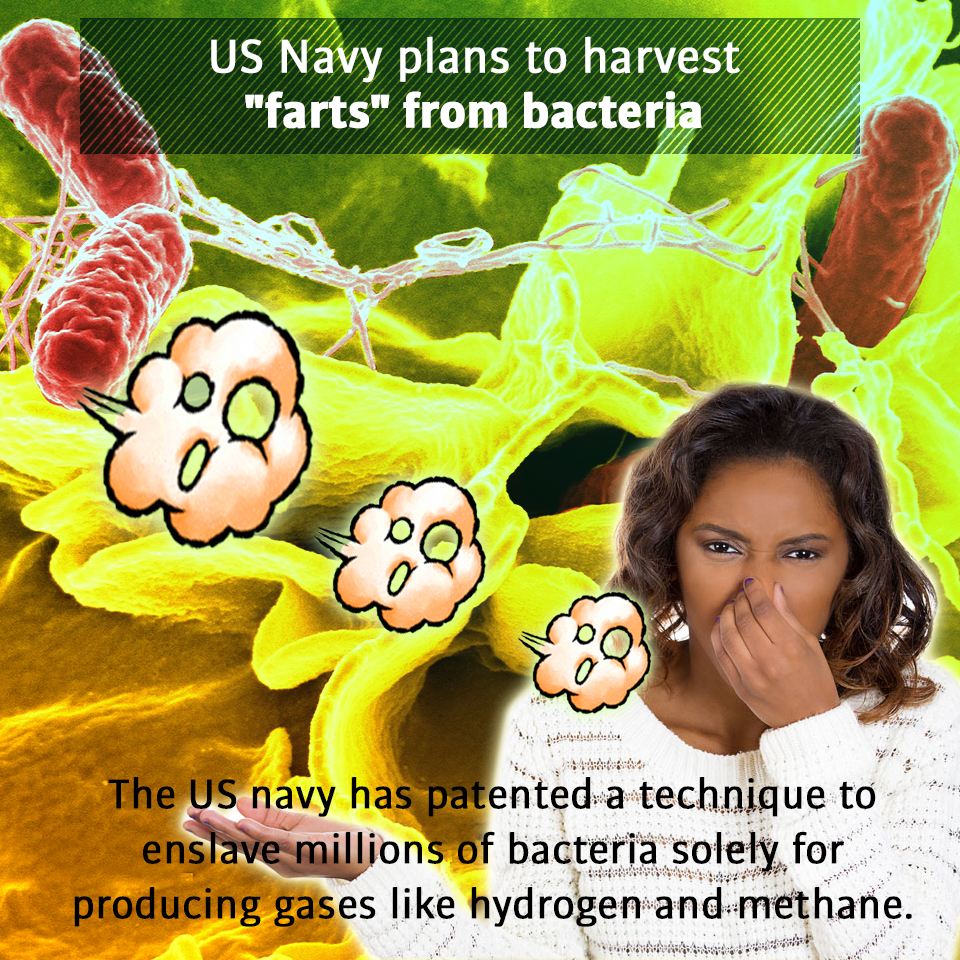The US navy has patented a technique to enslave millions of bacteria solely for producing gases like hydrogen and methane.
Selected bacteria are caged in a chamber and treated to a virtually endless supply of food. As a result of this eating spree, the bacteria produce large quantities of “flatulence”, the exact composition of which depends on the type of bacteria. For example, Clostridium acetobutylicum produces hydrogen, while Methanocelleus bourgensis produces methane.

The gases produced are trapped within the chamber building up the pressure, in some cases to as much as 30 psi above atmospheric pressure. Once gas of sufficient pressure is collected, a valve releases the gas out to another chamber for utilization.
One use of the gas thus produced is to float marine vessels from the bottom of the sea by letting the gas fill the ballast tanks. Essentially, the buoyancy of a marine vessel is increased by the production of such gases casing the vessel to float to the surface. When there is a need to submerge the vessel, the ballast tanks are filled with water causing the vessel to sink.

Another use of such gases, particularly hydrogen and methane, is in the production of energy that may power autonomous sensors, power drones or simply act as a portable power source.
Publication number: US 20160244706
Patent Title: BACTERIA-BASED GAS GENERATOR
Publication date: 25 Aug 2016
Filing date: 3 May 2016
Inventors: Barry J. Spargo; Justin C. Biffinger; Bradley R. Ringeisen; Erinn C. (Howard) Pirlo; Lisa A. Fitzgerald; Peter K. Wu; Michael P. Malito;
Original Assignee: The Government of the United States of America, as represented by the Secretary of the Navy

